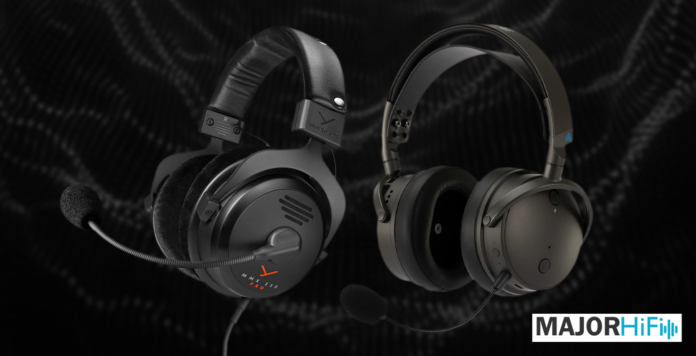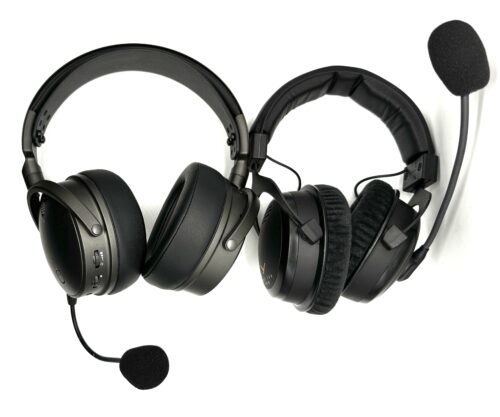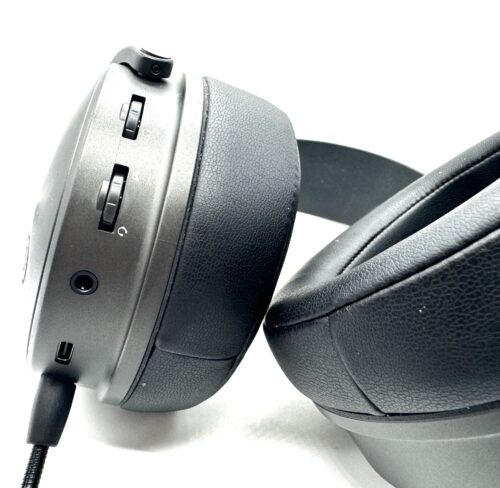It seems like every day, the market for gaming headsets gets more and more fierce. With that in mind, Beyerdynamic has fortified their gaming headset line with the MMX 330 Pro, an open-back variant to the MMX 300 Pro released earlier this year. We liked the MMX 330 here at MajorHifi. But we wanted to see how the headphone would stack up to a perennial all-star like the Audeze Maxwell. Despite a few differences in feature offerings, both are fantastic gaming headphones and given that they cost $329 and $299 respectively, we thought they would make for a great comparison. So let’s go ahead and break them down.
What’s in the Box:
| Audeze Maxwell | Beyerdynamic MMX 330 Pro |
|
|
Build:
The MMX 330 Pro has a reliable but understated build. It’s well-built using high quality materials and its large ear cups with velour pads make for a very enjoyable listening experience. Pair that with their lightweight frame and you’ve got one very comfortable headphone. Weighing in at just 318 grams, I found myself able to wear these for hours, which is excellent for a gaming headphone. The only disappointing part of the build was the lack of a detachable microphone. Given that they sound so good (more on that later), it would be nice to be able to take the mic off so they can appear a bit more practical.
Now, the Maxwell, on the other hand, does sport a detachable mic. And considering its bluetooth status, that really adds a layer of versatility to the headphone. That said, the Maxwell is quite a bit heavier than the MMX 330 Pro. The Maxwell weighs in at 490 grams, about 180 grams heavier than the Beyers. The Maxwell does have a suspension headband but you definitely feel the weight after some time.
Elsewhere around the headphone are control and power buttons and knobs, ports for the mic, USB-C, and a headphone cable if you choose to use them that way. The earpads are a comfy leathery material, and overall, it feels like a premium headphone.
All in all, I have to say that the Maxwell feels a bit more robust than the MMX 330 Pro, though I think both are reliably built for the long run. That said, the Maxwell’s apparent extra braun comes at the price of a significantly higher weight. So these tradeoffs will have to be considered when choosing between the two.
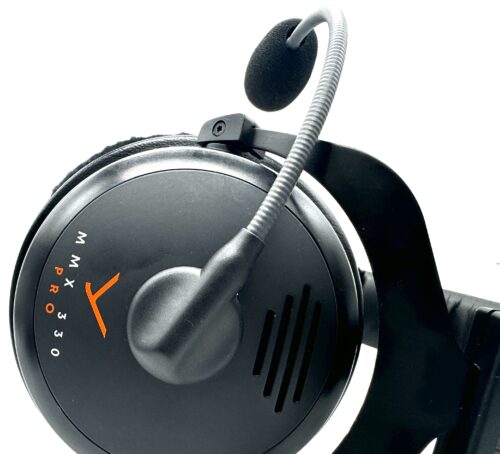
Design:
The MMX 330 Pro is an open back headphone, which is a major departure from Audeze’s closed back design. The Beyers use the company’s STELLAR.45 technology with a 45mm dynamic driver. It comes in with a 48 ohm impedance and an SPL of 96 dB/mW, so it’s not the easiest headphone to drive, which may mean it’s better suited for PC gaming than console.
The Maxwell is a planar magnetic headphone, and uses a 90mm driver. Its wireless design means you don’t have to worry so much about powering it, but even so, I would’ve liked to have seen a bit more head room. I had to crank the Maxwell’s to get them to a point where they felt loud enough.
It’s hard to say one headphone is better than the other here. If you prefer an open back sound, you’ll probably want to steer towards the Beyerdynamics. But if you’re someone who prefers planar sound to dynamic, then maybe the Audeze is the better option.
Features:
Aside from the connected microphone, the MMX 330 Pro is a fairly straight forward headphone. The Maxwell, however, looks to bring in more technology to help amplify the gaming experience. It sports Bluetooth 5.3, and can connect directly to a dongle as well. It has an 80-hour battery life plus fast charge to bring it back quickly. It also uses an AI-powered noise filter to help improve your voice clarity while gaming, and it’s certified for Dolby Atmos. I’ll also note that the microphones perform quite similarly on each, though if I had to be more discerning, I’d say the Audeze has better vocal processing while the Beyer has a better overall mic.
As far as features go, the Maxwell is certainly more advanced. That said, it’s not all about the features. What matters most is how the headphone performs. So let’s dig deeper into sound impressions to really see what’s what.
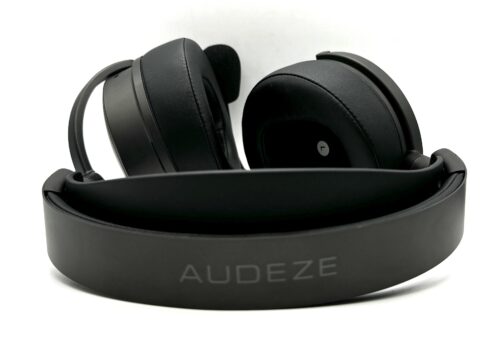
Sound Impressions:
Low End:
The low end on the Beyerdynamic headphone is lean but nimble. It punches fast and hard with quick attack and decay. However it does miss out on some more midbass bombast. They definitely put an emphasis on clarity over effect. This led to better room for dialogue during gameplay, as well as a better sense of space.
The Maxwell is a bit more rambunctious with its bass presentation. Its planar driver can really ring in explosions or shots with gusto. But this comes at the expense of clarity. There’s just a little less detail in the Maxwell’s bass response when compared to the MMX 330 Pro. So this will come down to whether you prefer bass quantity or bass clarity.
Mid Range:
The midranges on both headphones are pretty well done. The MMX 330 Pro is crystal clear with tons of space. I was especially impressed by its layering capabilities on more complex games like the Witcher 3. Music, sound effects, and dialogue were all mixed very well. The Maxwell has a little more coloration and pushes dialogue to the forefront. I did find the midrange to feel a bit more artificial than the MMX 330 Pro, but impact and dynamics were stronger on the Audeze.
Top End:
The top end on both of these headphones is exquisite. Both are sparkly with plenty of extension. With music, the Beyer resolved detail a bit better, but in gaming, the Maxwell’s treble felt more cohesive and in line with the rest of the sound signature.
Soundstage:
Ok let’s talk about soundstage, one of the most important components of how a gaming headset performs. These headphones are completely different in how they go about soundstage, given their open-back vs. closed-back designs. The MMX 330 Pro has a wide and natural soundstage. It probably feels a tad bit brighter than the Audeze, but not by much. That said, the Audeze has a much more precise imaging than the MMX 330 Pro. So if you’re playing games online and need to rely on footstep tracking, the Maxwell may be better. But if you’re looking for a more cinematic soundscape, perhaps on a more narrative based game, then the MMX 330 Pro may be more up your alley.
Final Thoughts:
These are two excellent headphones, and I feel pretty torn on which one might be better than the other. The Maxwell is probably better for an online gamer who needs accurate imaging and immersive bass response. Meanwhile the MMX 330 Pro is probably geared more towards the gamer who wants an expansive sound and top notch layering. Ultimately things like wired vs. wireless, driver selection, and weight may be bigger deciding factors than the sound performance, since these both sound so great. The best thing to do is give them both a try and see which is right for you.
The Beyerdynamic MMX 330 Pro and Audeze Maxwell are available at Audio46.
MAJORHIFI may receive commissions from retail offers.


